Egg-cellent Quiz
Take our egg-citing quiz and learn whose egg belongs to which animal. All these creatures are ones found in the UK and in Devon. You might become an egg-spert by the end of it - have fun!
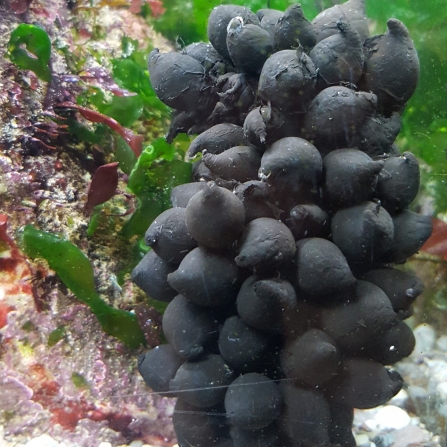
Question 1)
These distinctive eggs look like small bunches of black grapes and are usually laid in and amongst sea grass, a favourite habitat of this incredibly intelligent marine mollusc! You might also find their "bones" washed up on the beach!
Whose eggs are they?
A) Sea snail B) Octopus C) Cuttlefish D) Sea Slug
Click here for Answer
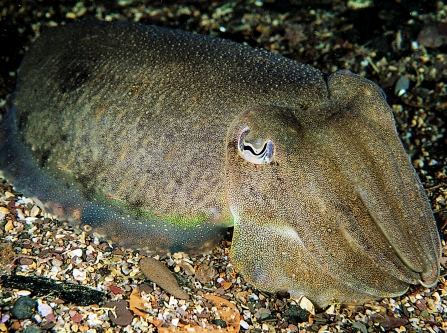
Credit: Paul Naylor
C) Cuttlefish! - Cuttlefish are relatives of squid and octopuses - a group of molluscs known as cephalopods and can change their colour to camouflage in with their surroundings - cool!
Question 2)
You can often find this egg(case), also known as a ‘mermaid’s purse,’ washed up on the beach, once the baby has hatched out! It was laid by a species of fish whose ancestors have lived in our oceans for over 400 million years!
Whose eggs are they?
A) Turtle B) Catshark C) Great-white Shark D) Seahorse
Click here for answer
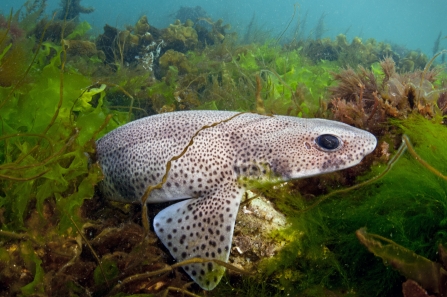
Credit: Alexander Mustard/2020 Vision
B) A Lesser Spotted Catshark! - They are also confusingly known as 'DogFish' and are indeed a type of small shark. The egg cases have twirly bits at the end called 'tendrills' which help the egg case stay attached to things like seaweed, and not get wash away within the sea.
Credit: G Coombe
Question 3)
These eggs are from a feathery friend. They make remarkable nests, which are lined with mud, all collected using their beaks. They are quite intelligent - they use rocks to smash open the shells of snails for a nice supper!
Whose eggs are they?
A) Robin B) Pigeon C) Song Thrush D) Blackbird
Click here for answer
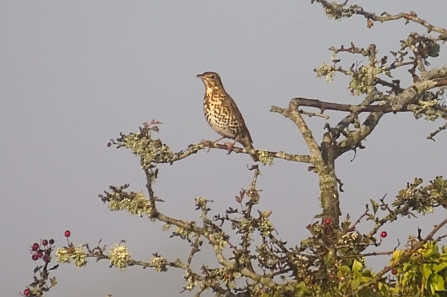
Credit: David Longshaw
c) A Song Thrush! - Named after its lovely song that it sings.
Question 4)
These miniature rugby ball shaped capsules can house up to 1000 eggs and are laid by a creature you might find in a rockpool...
Whose eggs are they?
A) Dog Whelk B) Starfish C) Crab D) Limpet
Click here for answer
Credit: Helen Bolton
A) Dog Whelk - Dog whelks are CARNIVOROUS sea snails! Let’s just say you wouldn’t want to invite one to dinner if you were a limpet or a mussel!
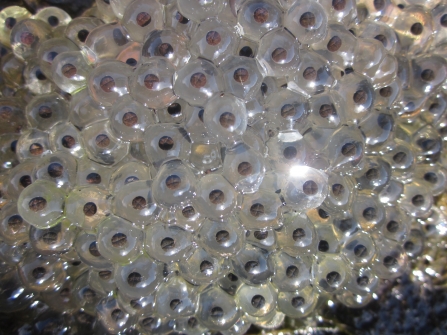
Question 5)
This amphibian normally lays its eggs in ponds but can sometimes even be found in puddles! They can lay up to around 2000 eggs at a time...
Whose eggs are they?
A) Toad B) Frog C) Crocodile D) Newt
Click here for answer
Credit: Adam Rhodes
B) A Common Frog! Frogs eggs are called 'Frogspawn', they are laid in big clumps, where as toads eggs look similar but are laid in lines!
Question 6)
These eggs are laid on the underside of rocks by a common rockpool fish. This fish differs from another common rockpool fish because it has TWO dorsal fins running along its back and has a down turned, grumpy mouth!
Whose eggs are they?
A) Common Blenny B) Starfish C) Pipefish D) Rock Goby
Click here for answer
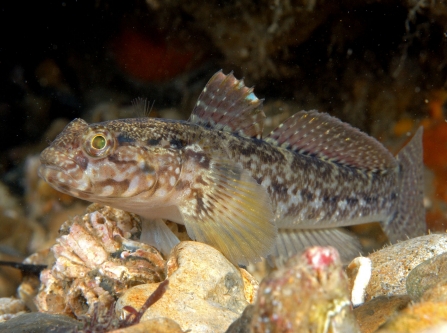
Credit: Paul Naylor
D) Rock Goby - Rock Gobies can lay up to 7000 eggs at a time and the dad will guard the eggs with his life!
Credit: Bruce Shortland
Question 7)
Look closely on the leaf. There is a small orange looking egg. This animal also lives in ponds, they usually climb up onto the plants around them and lay their eggs one at a time onto the leaves.
Whose eggs are they?
A) Dragonfly B) Newt C) Toad D) Water Spider
Click here for answer
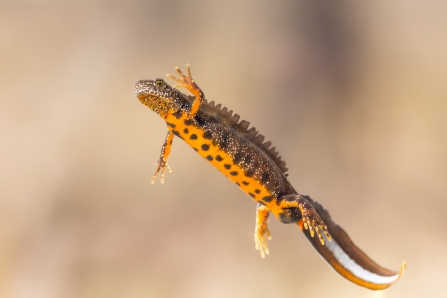
Great-crested newt
B) Newt! ... This egg in particular is from a 'Great crested newt' (pictured). They are the rarest of all 3 UK speicies, and the biggest! When the female lays her legs, she will use her back legs to wrap up the egg with the leaf- leaving it in a little parcel!
Credit: Kevin New
Question 8)
This little egg is laid by a beautiful insect that visits flowers for nectar, it lays its eggs on particular plants so that when their young grow up they have something to feed on immediately!
Whose eggs are they?
A) Butterfly B) Bee C) Dragonfly D) Ladybird
Click here for answer
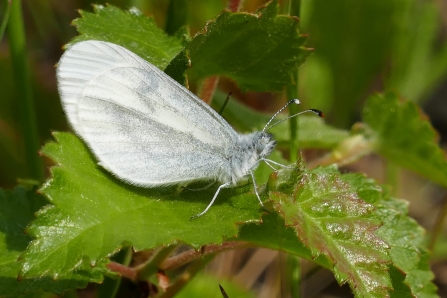
Credit: Dave Spencer
A) Butterfly! - In fact this egg is from a really rare butterfly called a 'Wood White' (pictured). Not all butterflies lay their eggs one at a time like this one, some lay lots of them together in clusters!
Question 9)
Its getting harder now... This long ribbon of eggs is laid in a coil by a creature that is normally found under rocks in rockpools. They are often yellow in colour, but can be green, white or brown. Their body is covered in warty lumps and their markings are often blotchy.
Whose eggs are they?
A) Limpet B) Shore Crab C) Grey Sea Slug D) Sea Lemon
Click here for answer
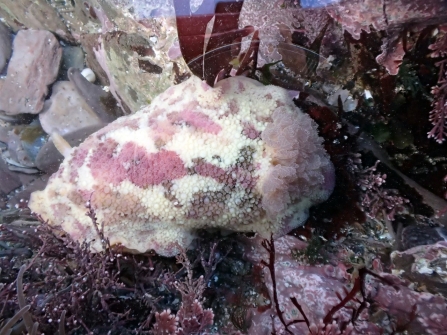
Credit: Sue Carlyon
D) Sea Lemon! - Yes that is a real animal! It is a type of large sea slug, named so because some say it often looks like lemon curd!
Question 10)
Lets finish on a hard one! These eggs come from a type of ‘NUDIBRANCH’ who likes to eat sea anemones and absorb their stinging cells for its own protection! Cool or what?
Whose eggs are they?
A) Seahorse B) Grey Sea Slug C) Star Sea Squirts D) Perriwinkle
Click here for answer
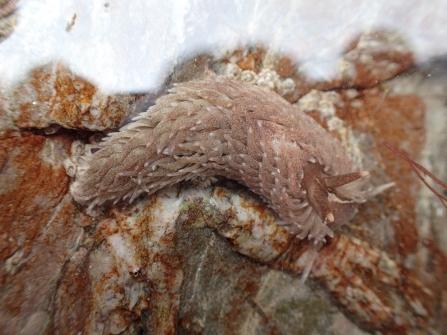
B) Grey Sea Slug! Up to 400,000 eggs can be laid and are usually found under rocks on the rocky shore. This creature is among a group of sea slugs called 'Nudibranches' - there are 3000 known species in the world, google them to see how cool they are!
Well done you've completed the Quiz!
See how much of an egg-head you are below:
1 - 3 Answers Correct: Not bad but you might need some egg-stra revision...
4 -6 Answers Correct: We're not yolking - thats pretty good!
7 - 8 Answers Correct: You've done egg-stremely well!
9- 10 Answers Correct: You're are an utter egg-spert!

Thanks to South West Water for supporting the production of these online resources
